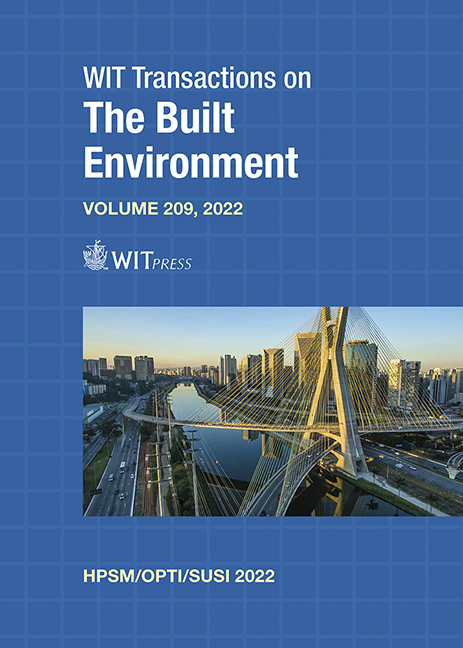INFLUENCE OF THE PROJECTILE SHAPE ON THE DYNAMIC TENSILE CHARACTERIZATION OF CONCRETE USING A SPLIT HOPKINSON BAR
Price
Free (open access)
Transaction
Volume
209
Pages
12
Page Range
155 - 166
Published
2022
Paper DOI
10.2495/HPSU220141
Copyright
Author(s)
MARIA L. RUIZ-RIPOLL, VICTOR REY DE PEDRAZA, CHRISTOPH ROLLER
Abstract
Because of its relevance in civil infrastructures, the analysis of the dynamic behaviour of concrete has increased exponentially in recent years. This is motivated by the new type of threats that have to be taken into consideration nowadays when designing these types of structures. The growing interest in the dynamic response of concrete arises from the enhancement of its mechanical properties when the material is subjected to high strain rates. In this research, the traditional Split Hopkinson Pressure Bar developed by Kolsky, with a standard compression configuration (including incident and transmitted bars) was modified into a version in which the transmission bar was removed, so that the specimen’s response is dominated by tensile stresses inside it. Spalling tests on cylindrical samples were carried out to measure the tensile strength and the fracture energy of conventional concrete. Results for strain rates ranging from 60 to 130 s–1 are presented and compared to the respective quasi-static values. As the key point of the research, two different projectile shapes (cylindrical and conical) have also been evaluated, presenting a qualitative and quantitative analysis regarding the variations in tensile stress evolution of the pulses.
Keywords
Split Hopkinson Bar, spalling, dynamic tensile strength, concrete, fracture





